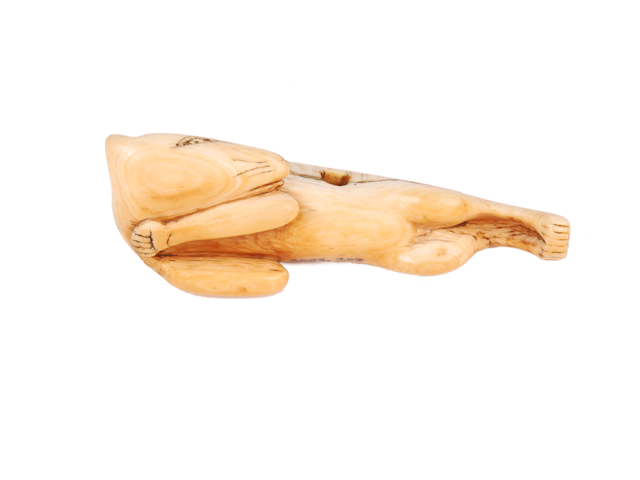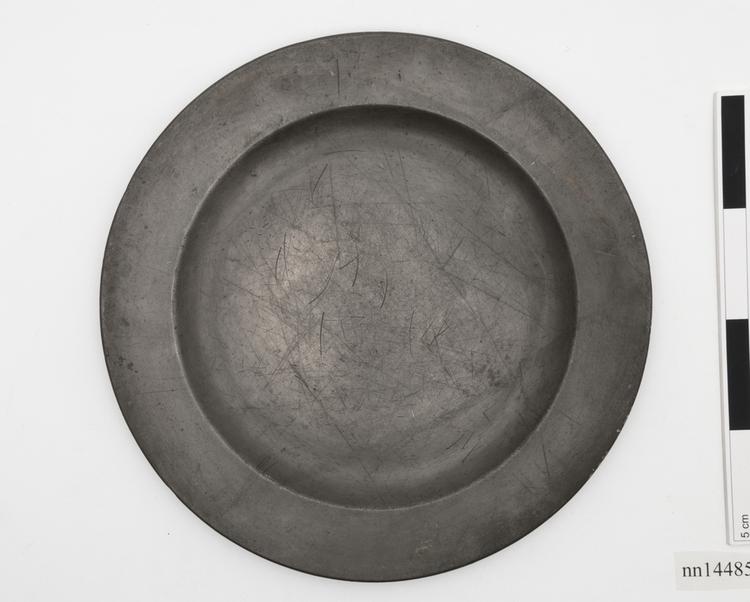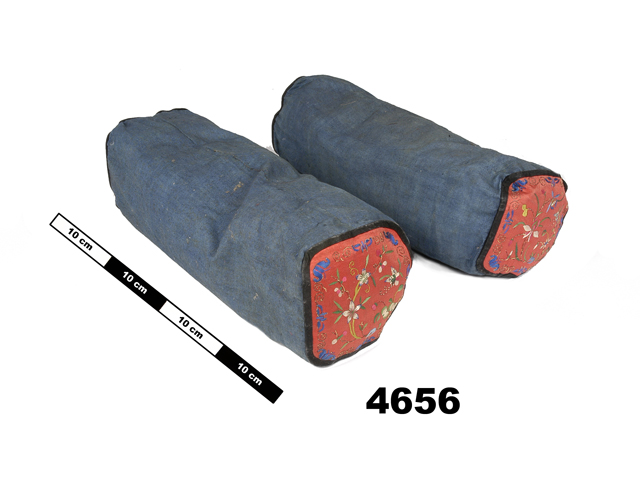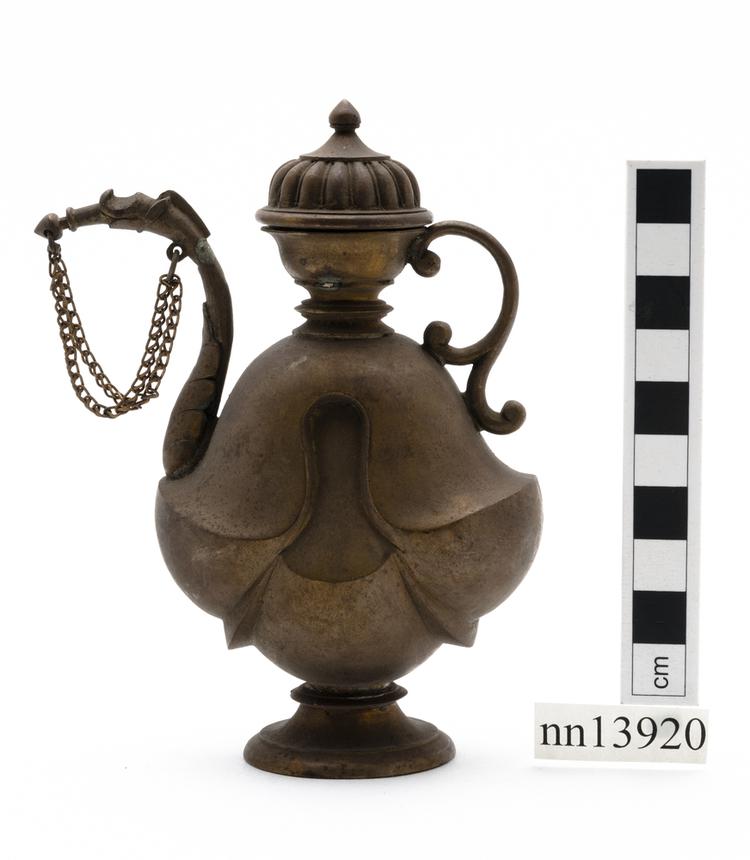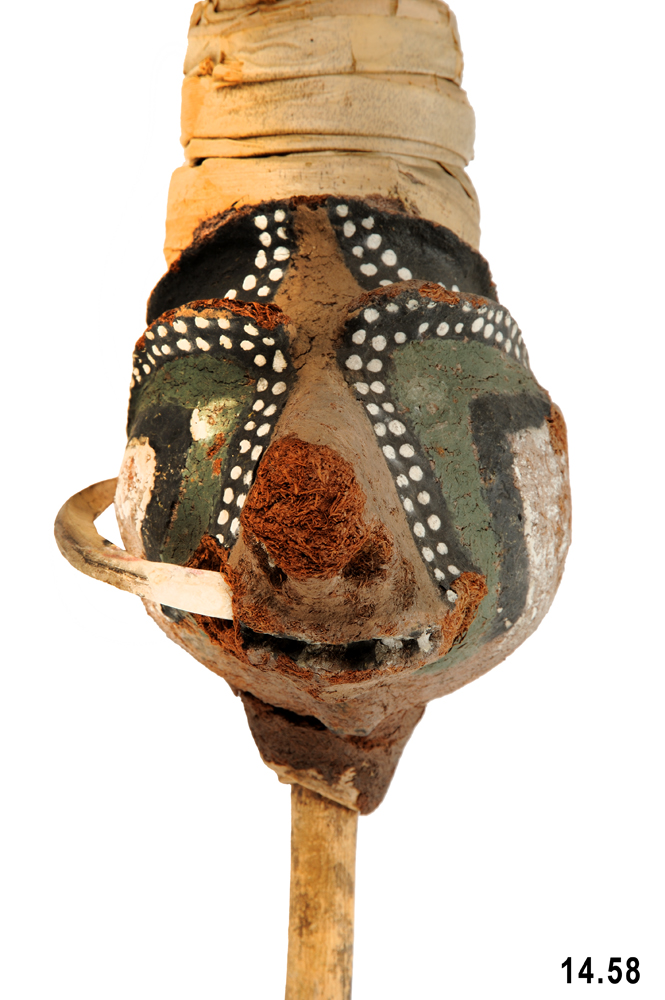


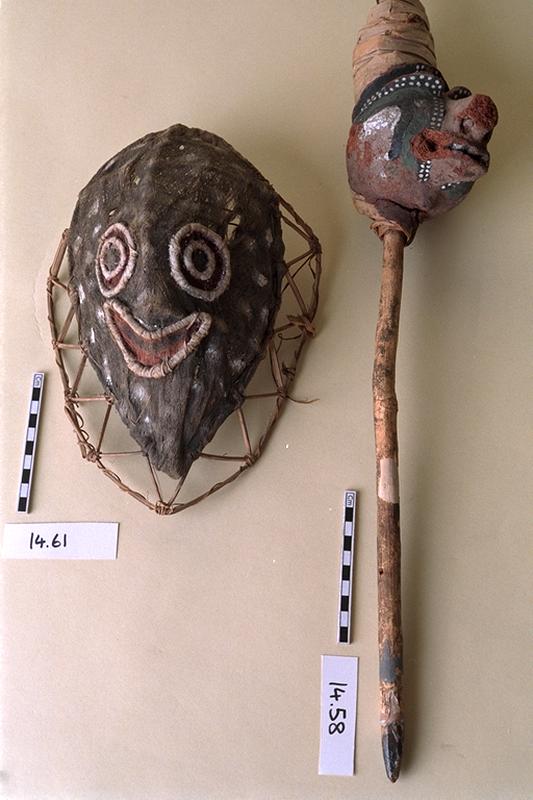
Moulded clay head on stick, used in certain dances and kept in 'tabu house'. Clay head decorated with green, black and white pigment and one shell 'tusk'.
Dance Puppet, Malakula island, Vanuatu. When this object was presented to the museum in 1914, it was believed to be a temple puppet used in pagan rituals, offering the gods a vehicle through which they could appear to the people. In reality, however, it seems that such puppets from Malakula had an everyday, even comical, role in ni-Vanuatu culture. The puppet is made by mounting an empty coconut shell on a stick, and then over-modelling it with a distinctive mixture of finely chopped coconut husk and clay found only in Vanuatu. Dance puppets such as this were generally caricatures of widely known local individuals, whose features were enhanced with the addition of pigs’ tusks. Real pigs’ tusks were far too valuable to be wasted on making such adult playthings, and so this puppet’s one remaining tusk is cut from a ring of Triton shell instead. Coconut, wood, coconut husk fibre, earth, shell, pigment. Formerly in the private collection of Commodore James Elphinstone Erskine, the Scottish naval officer who proclaimed a British Protectorate over south-eastern New Guinea in 1884; as he returned to Britain in 1885, it is likely that this object was acquired by him during that time. Purchased by the Horniman Museum alongside other Erskine items at Stevens Auction Rooms, 1914.



